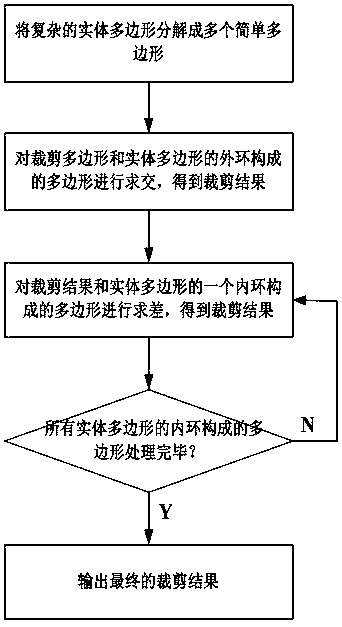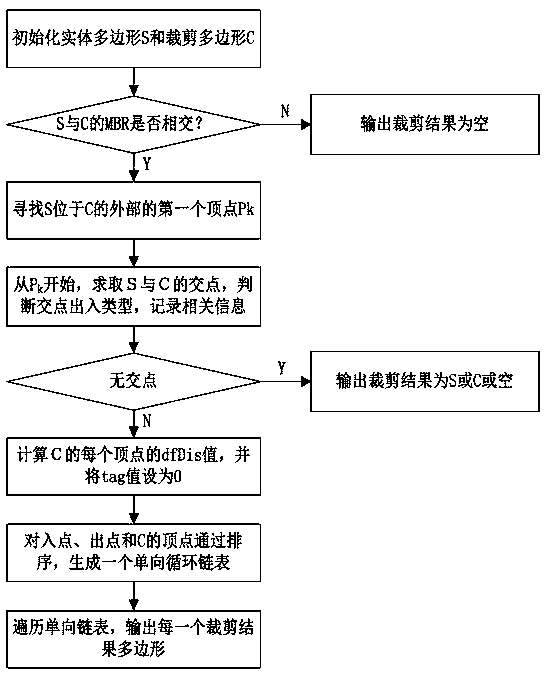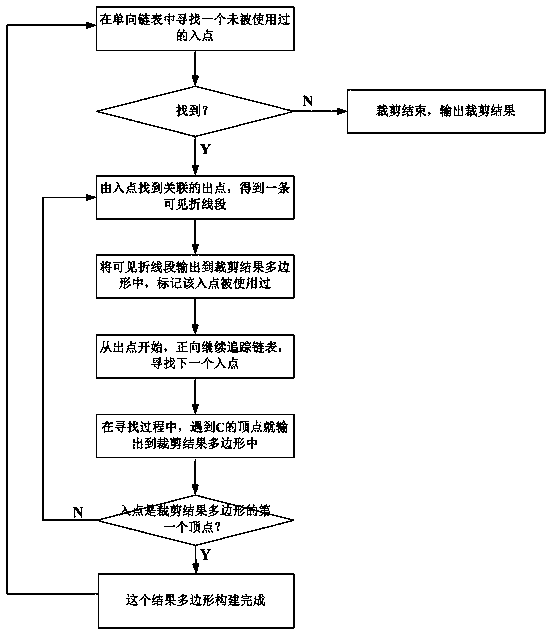A Complicated Polygon Clipping Method to Solve the Problem of Intersection Degeneration
A polygon and intersection technology, applied in the field of complex polygon clipping, can solve the problems of no specific description and heavy workload, and achieve the effect of easy implementation, speeding up the running speed, and reducing the number of intersections.
- Summary
- Abstract
- Description
- Claims
- Application Information
AI Technical Summary
Problems solved by technology
Method used
Image
Examples
Embodiment Construction
[0066] Below in conjunction with accompanying drawing and specific embodiment the present invention is described in further detail:
[0067] Such as figure 1 As shown in , the steps to transform the clipping problem of any polygon into a series of clippings of simple polygons without holes are as follows:
[0068] (1) Assuming that the clipped polygon (also known as the solid polygon) is S, and the clipped polygon is C, the complex solid polygon with holes is decomposed into multiple outer rings and N (N≧0) inner rings without holes. A simple polygon of
[0069] (2) Perform an intersection (S∩C) operation on the polygon formed by the outer boundary of the solid polygon and the clipping polygon to obtain the clipping result;
[0070] (3) If S does not contain holes, then directly output the clipping result; otherwise, continue to step 4;
[0071] (4) The result polygon is regarded as a clipping polygon, and the polygon formed by a certain hole is regarded as a solid polygon,...
PUM
 Login to View More
Login to View More Abstract
Description
Claims
Application Information
 Login to View More
Login to View More - Generate Ideas
- Intellectual Property
- Life Sciences
- Materials
- Tech Scout
- Unparalleled Data Quality
- Higher Quality Content
- 60% Fewer Hallucinations
Browse by: Latest US Patents, China's latest patents, Technical Efficacy Thesaurus, Application Domain, Technology Topic, Popular Technical Reports.
© 2025 PatSnap. All rights reserved.Legal|Privacy policy|Modern Slavery Act Transparency Statement|Sitemap|About US| Contact US: help@patsnap.com



